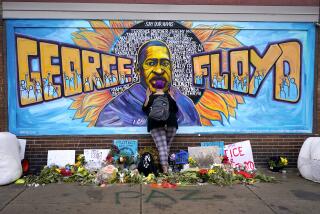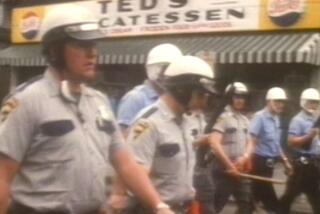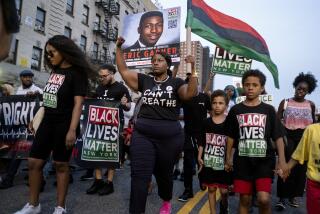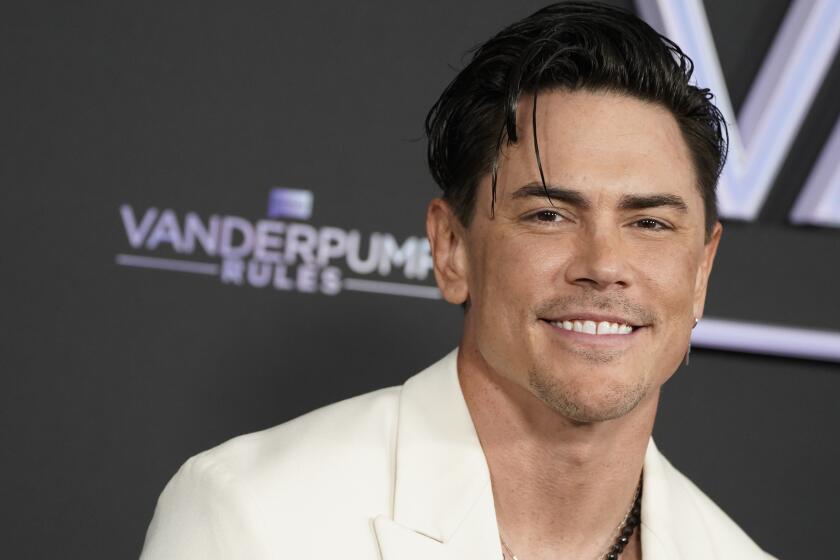Want to talk about policing on TV? Here are some damning stats you should know
For more than a week now, our screens have been flooded with footage of cops shooting rubber bullets at reporters, driving police vehicles into crowds of protesters, detaining essential workers exempt from curfews, macing a 9-year-old child, shoving elderly people to the ground and, of course, kneeling on the neck of George Floyd until he died.
But such horrifying real-life images are at odds with the fictional portrayal of law enforcement we’ve consumed on TV for decades. Amid nationwide protests of police brutality against black people and other marginalized groups, that dissonance has spurred an industry-wide reexamination of the role pop culture plays in shaping our perception of both the police and the people they deem a threat. Nonprofit civil rights advocacy organization Color of Change released a detailed study on the topic earlier this year.
“[These shows] create a world where we have cities, police officers, political officials, poverty, different races, and yet racism doesn’t seem to exist — a fictional world that is often quite diverse but without racism,” Rashad Robinson, president of Color of Change, told The Times this week. “As a result, that normalizes injustice. It makes it seem like the changes that we are fighting for are changes that are not necessary.”
Titled “Normalizing Injustice: The Dangerous Misrepresentations That Define Television’s Scripted Crime Genre,” the study includes the following findings.
Amid the unrest following George Floyd’s death, local TV news channels like KCAL 9, Fox 11, KTLA 5, ABC 7 and NBC 4 are making — and learning from — old mistakes.
Crime shows are largely created and written by white people
Real-life crime rates have generally decreased since the early 1990s but the number of crime series on TV has increased, which may be why most people don’t think crime has decreased at all.
Of the 26 series from the 2017-18 season examined in the study, 21 had showrunners who were white men. At least 81% of these shows’ writers were white, compared to the 9% who were black. A whopping 20 of 26 series had either no black writers or just one black writer.
CBS and NBC aired seven of the nine series that were the least diverse with respect to race and gender:
On CBS:
• “NCIS” was 100% white and 80% male.
• “Blue Bloods” was 100% white and 75% male.
• “Elementary” was 90% white and 70% male.
• “NCIS: Los Angeles” was 82% white and 82% male.
On NBC:
• “The Blacklist” was 93% white and 80% male.
• “Law & Order: Special Victims Unit” was 93% to 100% white and 57% male.
• “Blindspot” was 92% white and 58% male.
• “Chicago P.D.” was 80% to 90% white and 60% male.Characters of color are often written by largely white writers’ rooms
Relying on white writers to craft characters of color can perpetuate “distorted and harmful” depictions of those characters — “their realities, behaviors, relationships, motivations, thoughts, feelings and more,” according to the study. Of the 26 series considered, Netflix’s “Narcos” had the worst ratio of characters of color to white writers, followed by Fox’s “9-1-1,” NBC’s “Chicago P.D.” and CBS’ “Hawaii Five-0.”
Compared to the awful power of the video of George Floyd’s death, or even the intimate address of Trevor Noah, CNN, MSNBC and Fox News are utterly ineffectual.
Racism is generally nonexistent in these shows
Though several shows featured central characters played by people of color, there were no representations of major racial tension on the job and rarely any in their backstories or personal lives. The use of racist language also was rare. Nor were people of color depicted as being the disproportionate targets of these unethical behaviors. All of this adds up to the insinuation that law enforcement operates without racial bias. This is false.When wrongful acts are committed by cops, they’re normalized as harmless or noble
In more than two-thirds of the shows examined, these actions were committed by “good guy” characters, as defined by the study’s authors — thereby painting the actions as “relatable, forgivable, acceptable and ultimately good.” On average, eight “good guy” characters committed a wrongful action for every “bad guy” who did so. (CBS’ “Blue Bloods” and Fox’s “Lethal Weapon” were the worst offenders, the study found.)
These actions were rarely objected to or acknowledged as unlawful by other characters, and therefore were categorized as “part of the job.” Many times, characters played by people of color were depicted as endorsers of these actions. Excessive force was rarely depicted.
As a result, the crime shows studied generally reinforced the idea that what police (and other criminal justice professionals) do is “right” simply because they are police.Police rarely face any consequences for wrongful acts they commit
Out of 453 wrongful actions committed by police and criminal justice professionals across 353 episodes, only 13 — less than 4% — were depicted as being investigated, the study found. Only six were depicted as being charged with crimes, and four suspended for their behavior (with or without pay). Only one was shown as being fired, convicted or facing legal punishment.
Read the full study here.
Meredith Blake contributed to this report.
More to Read
The complete guide to home viewing
Get Screen Gab for everything about the TV shows and streaming movies everyone’s talking about.
You may occasionally receive promotional content from the Los Angeles Times.








